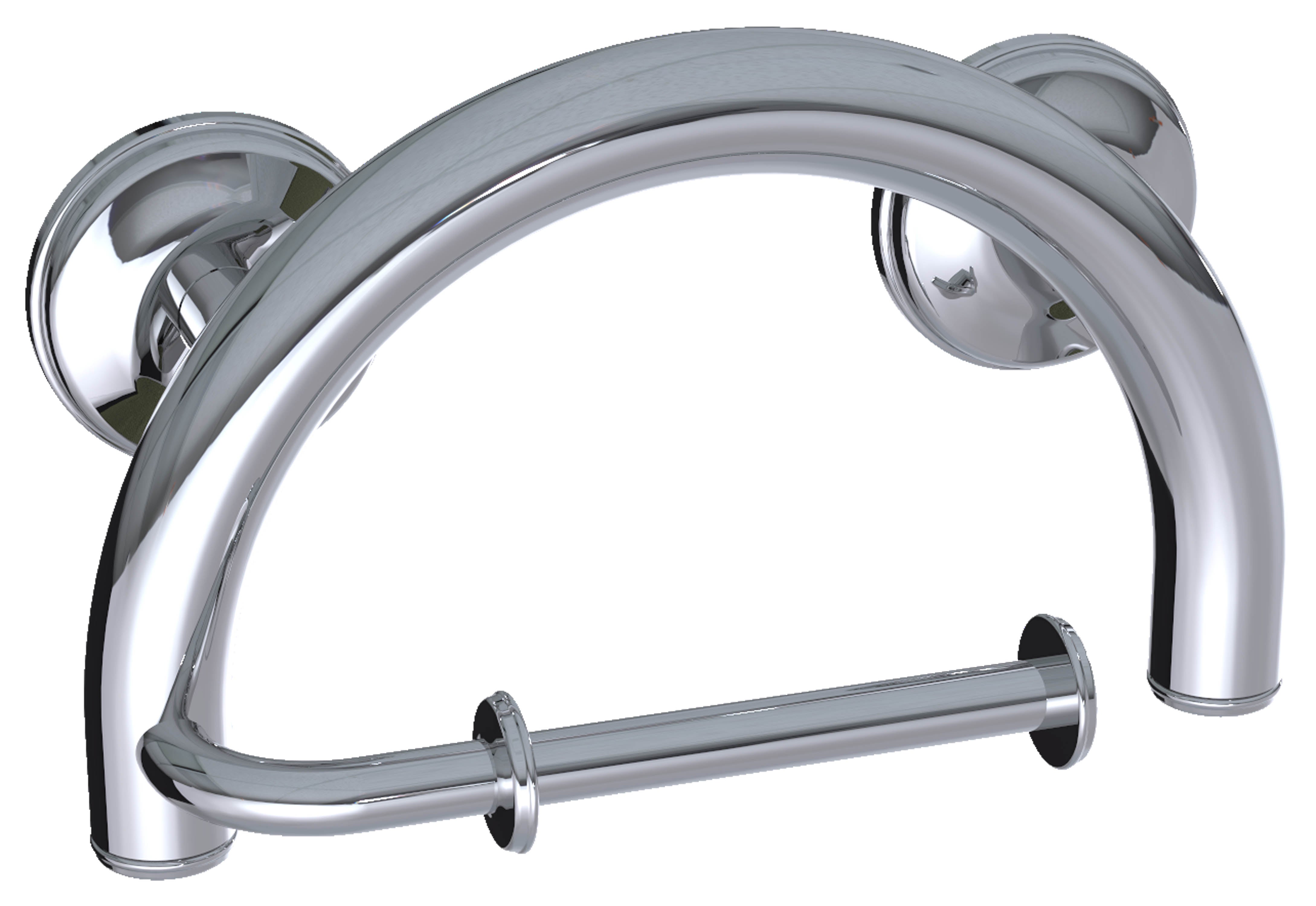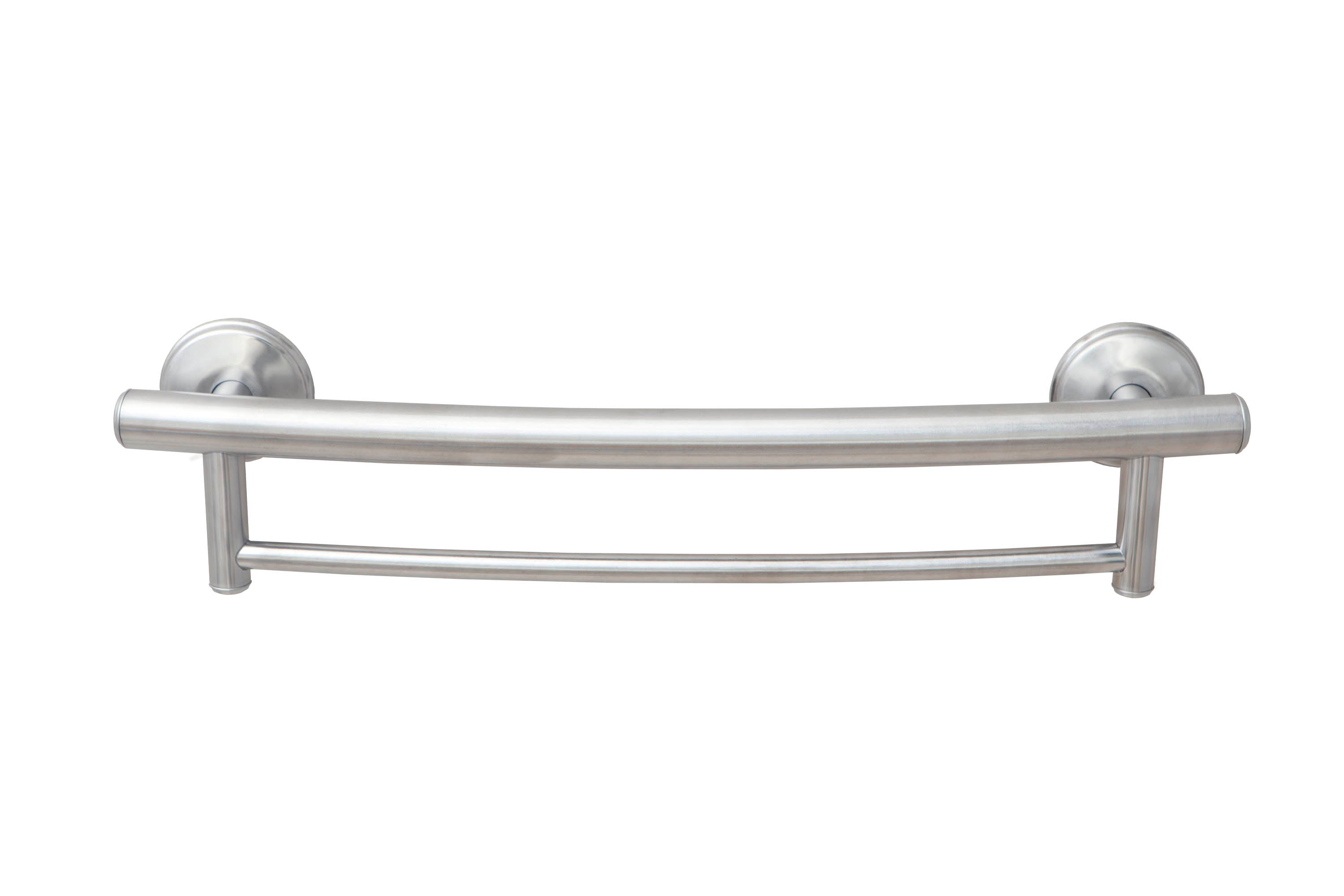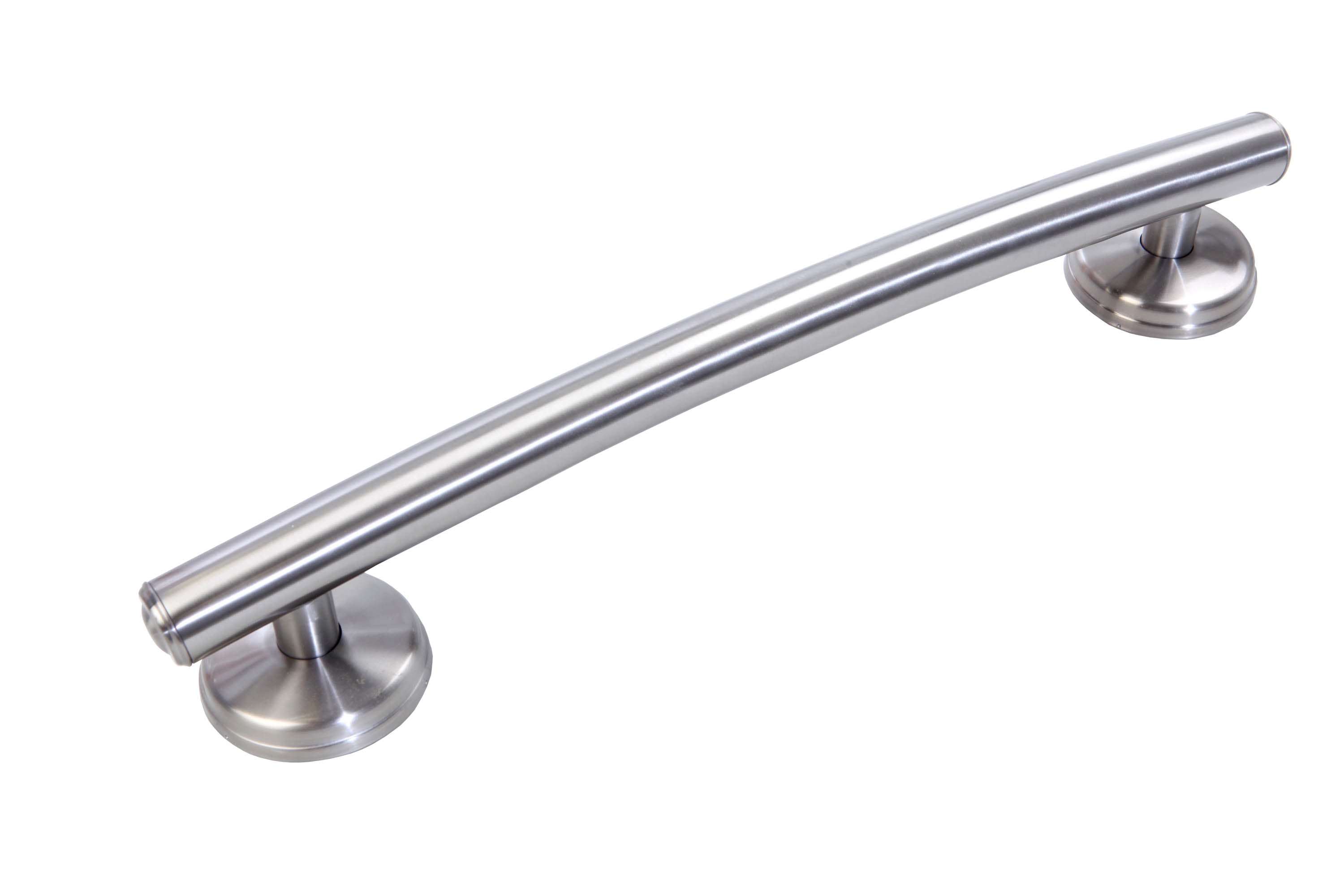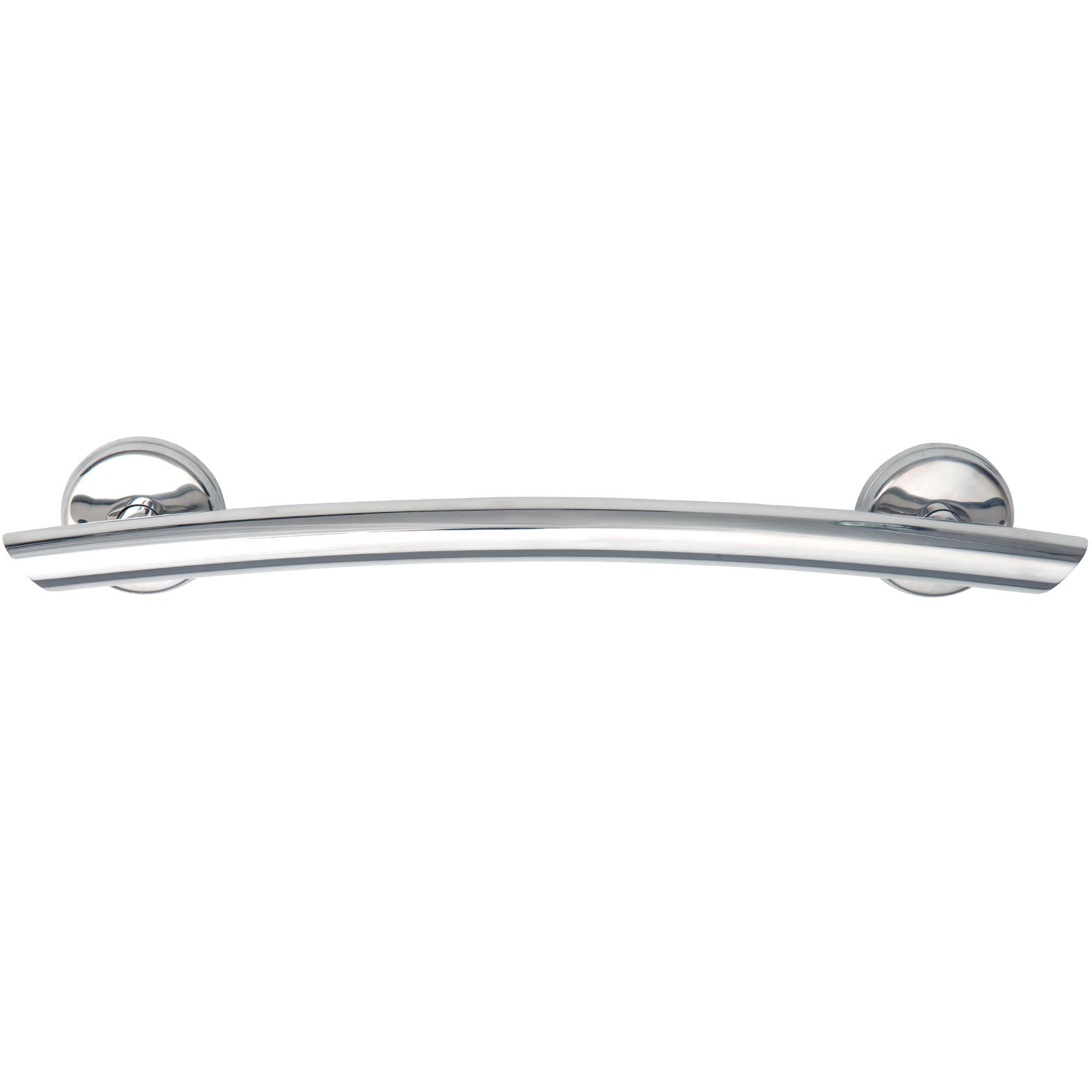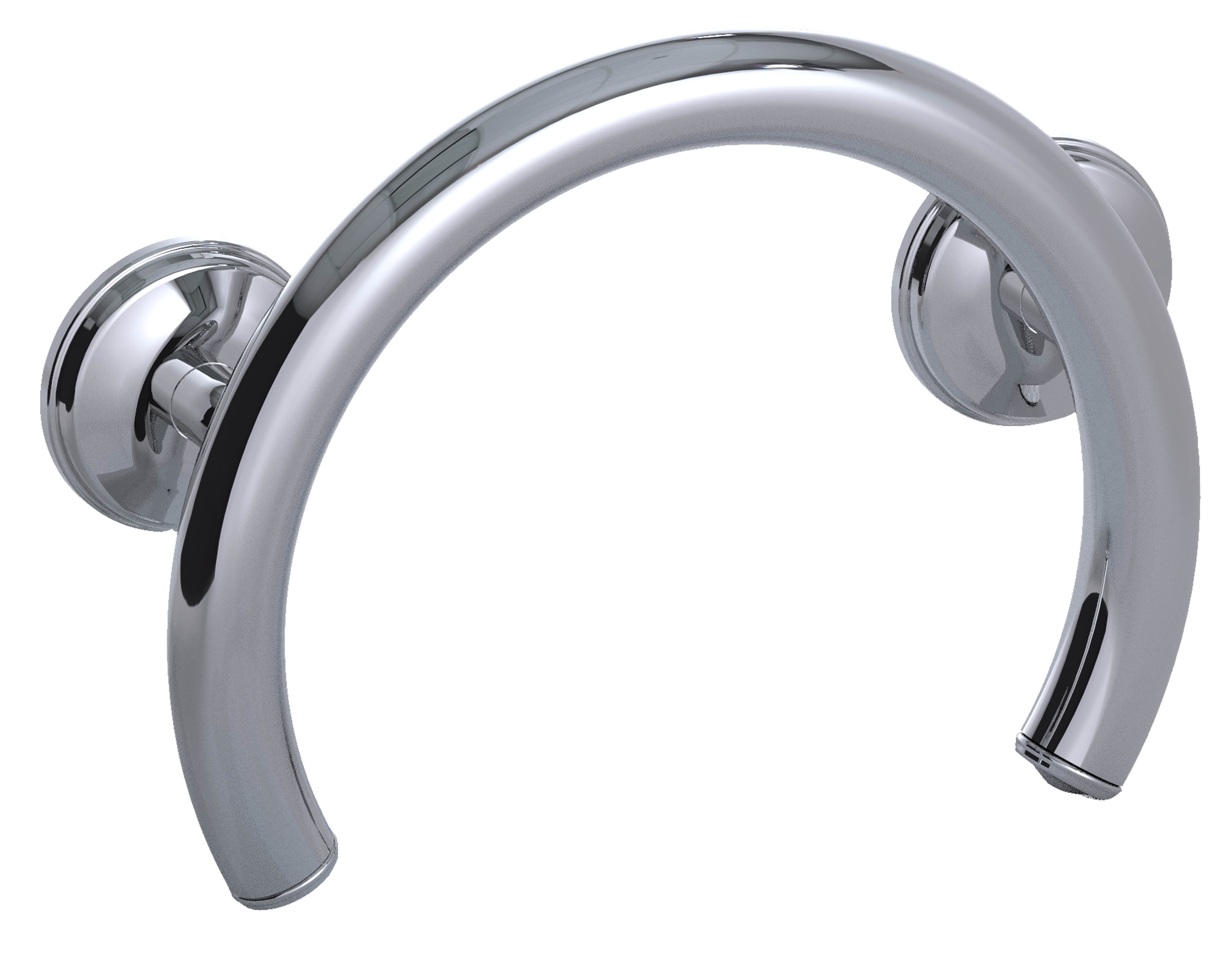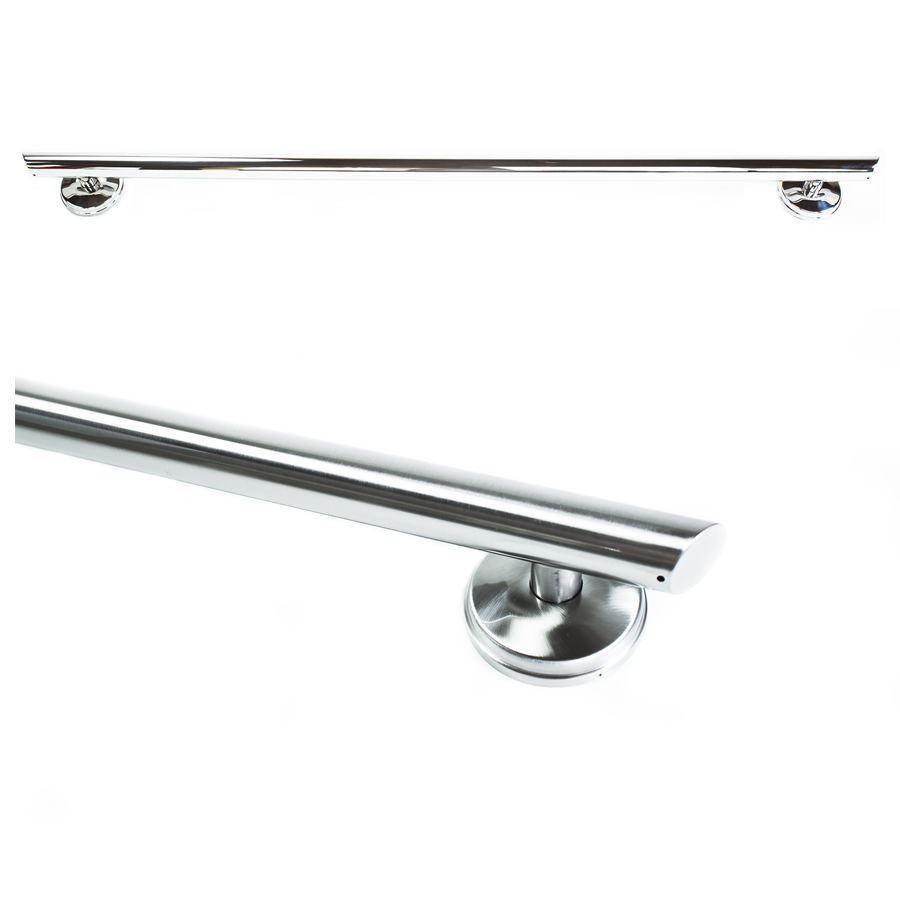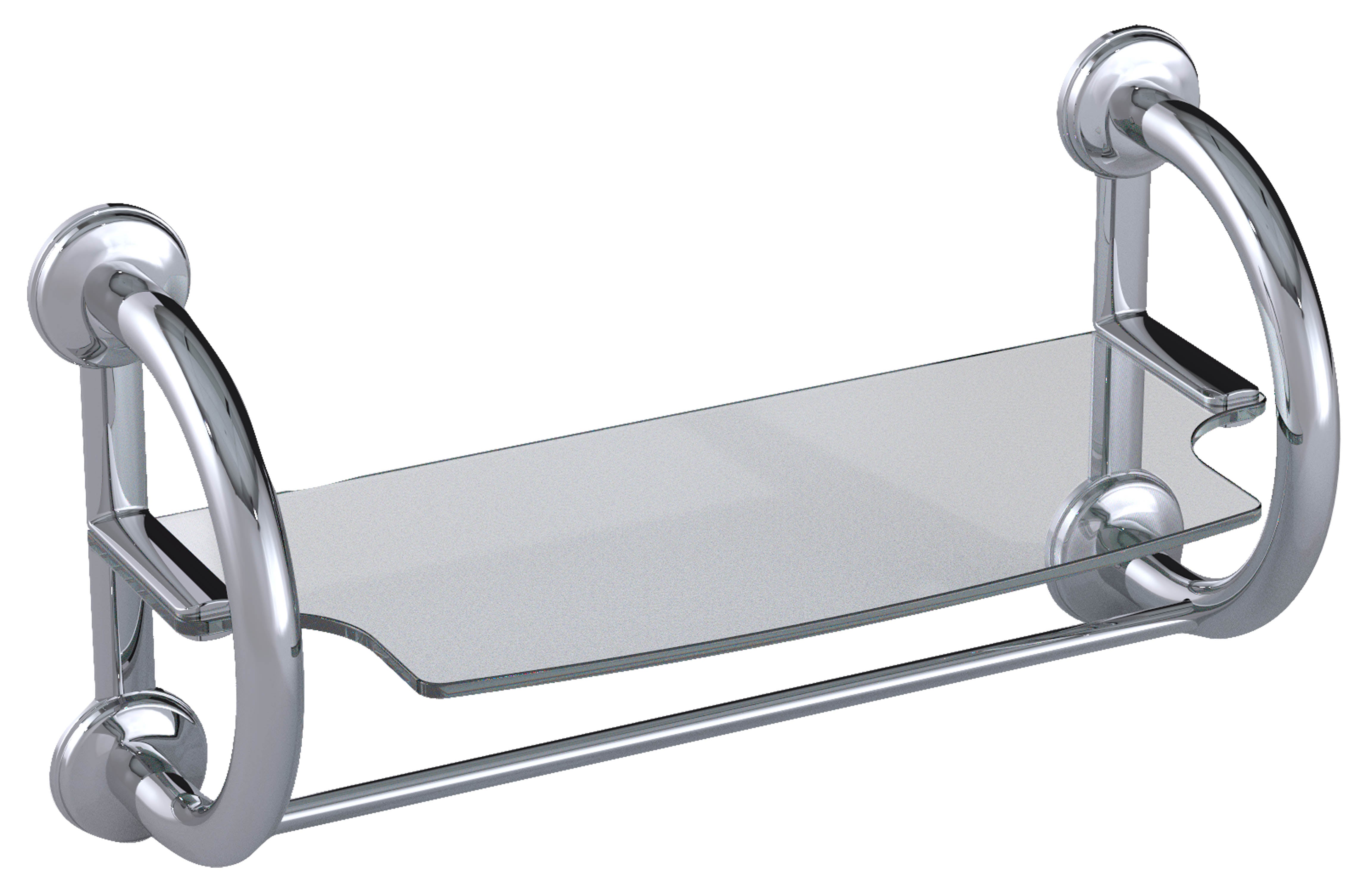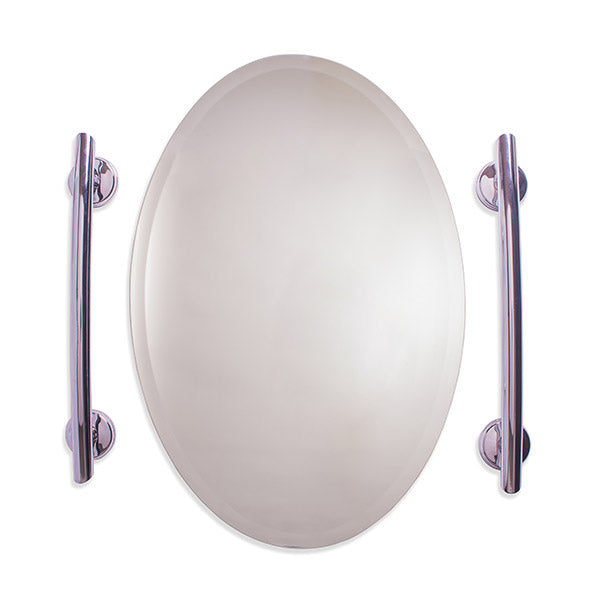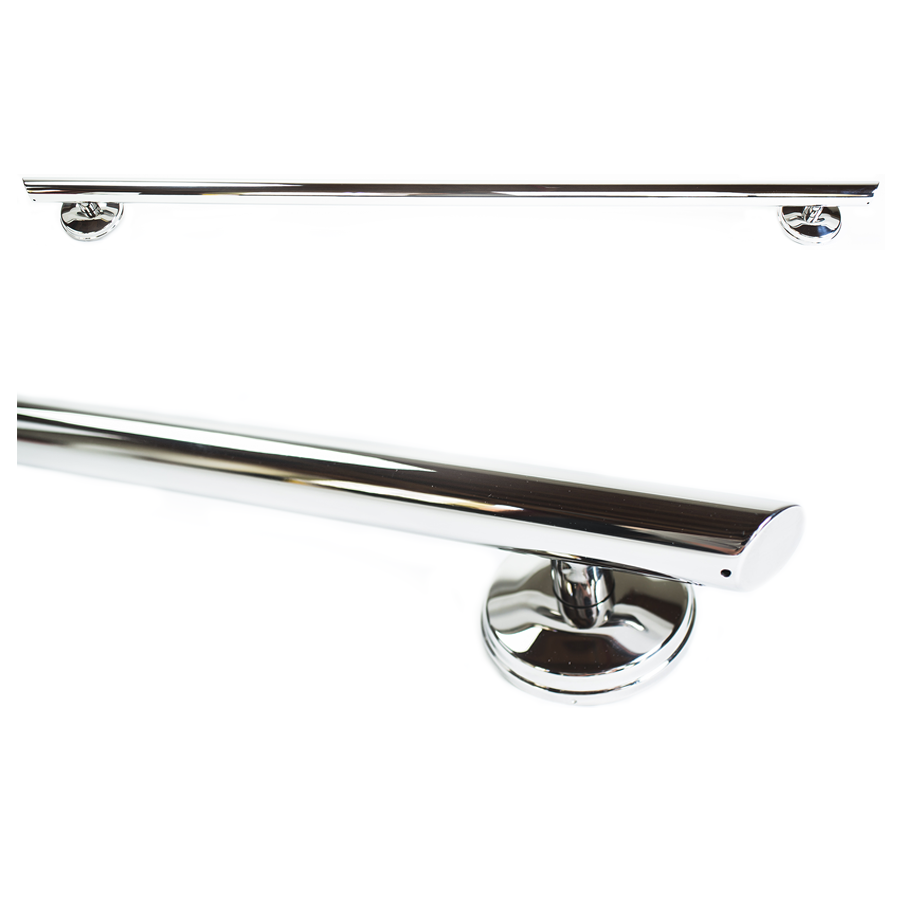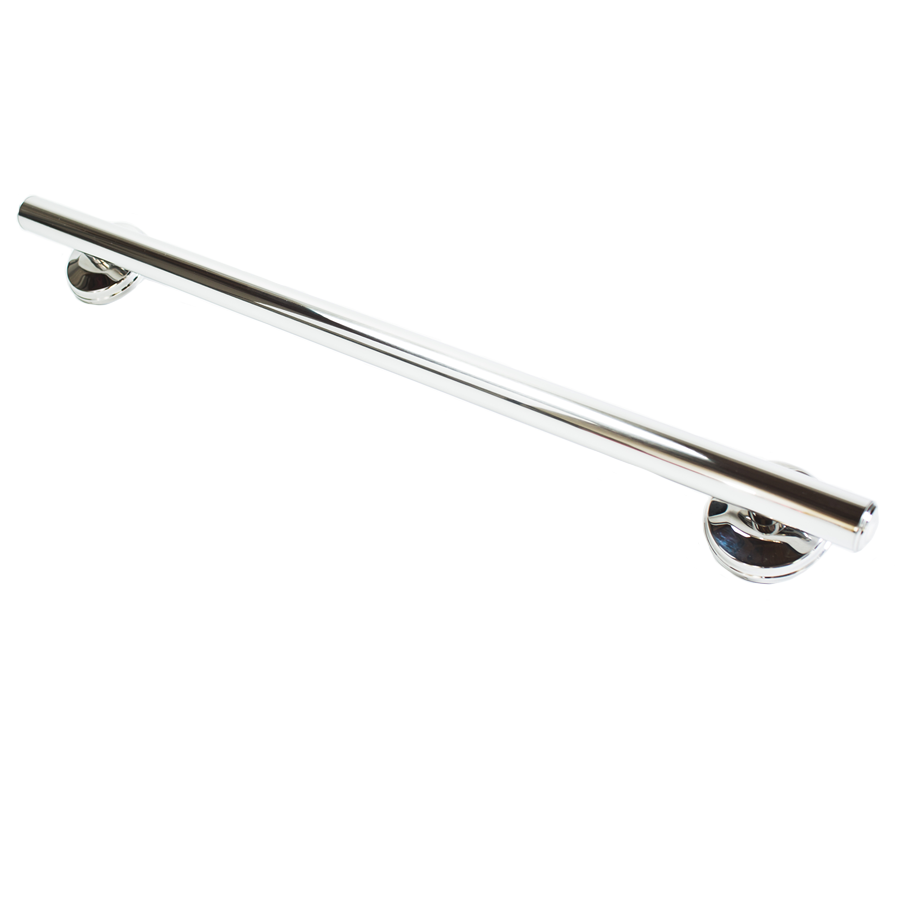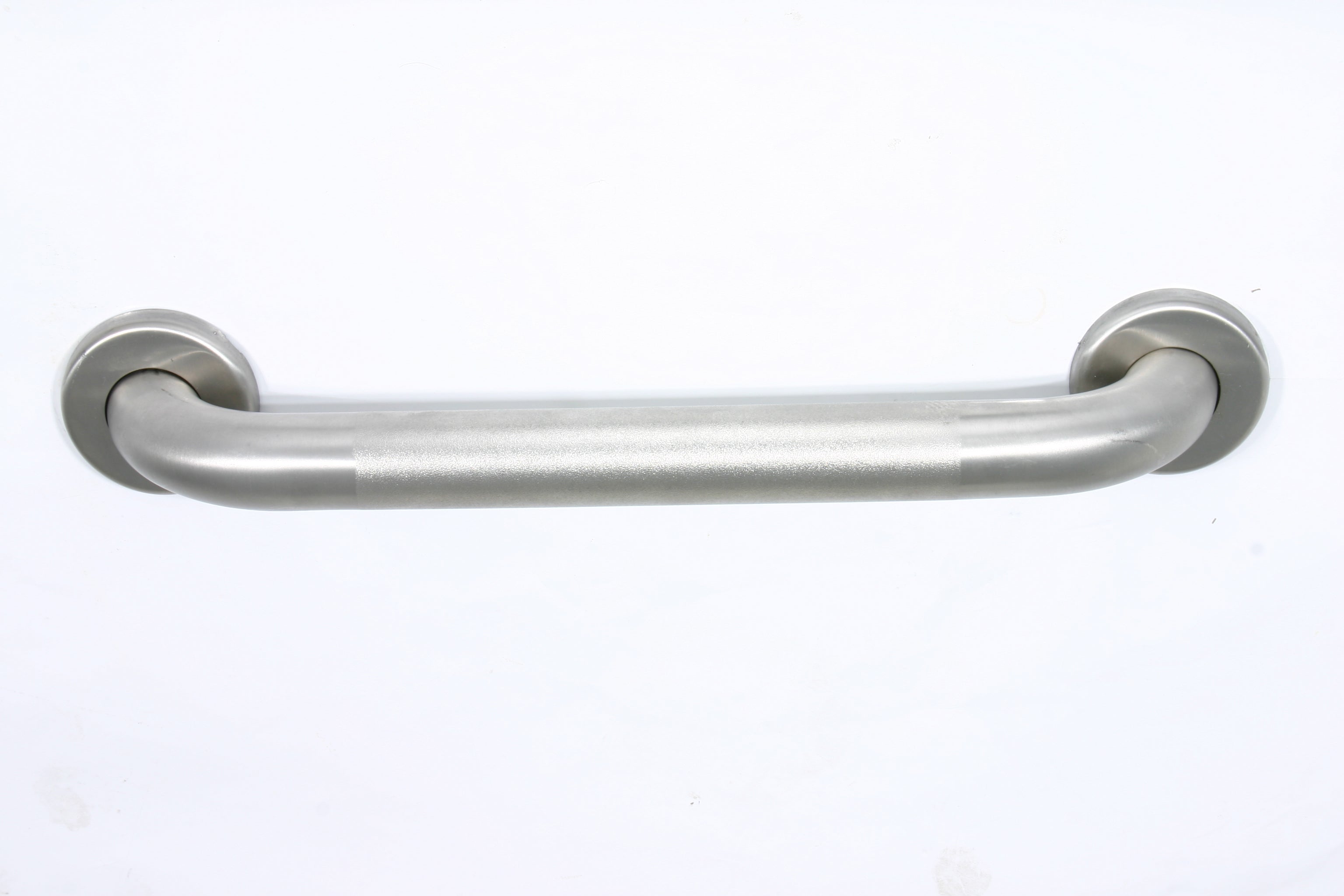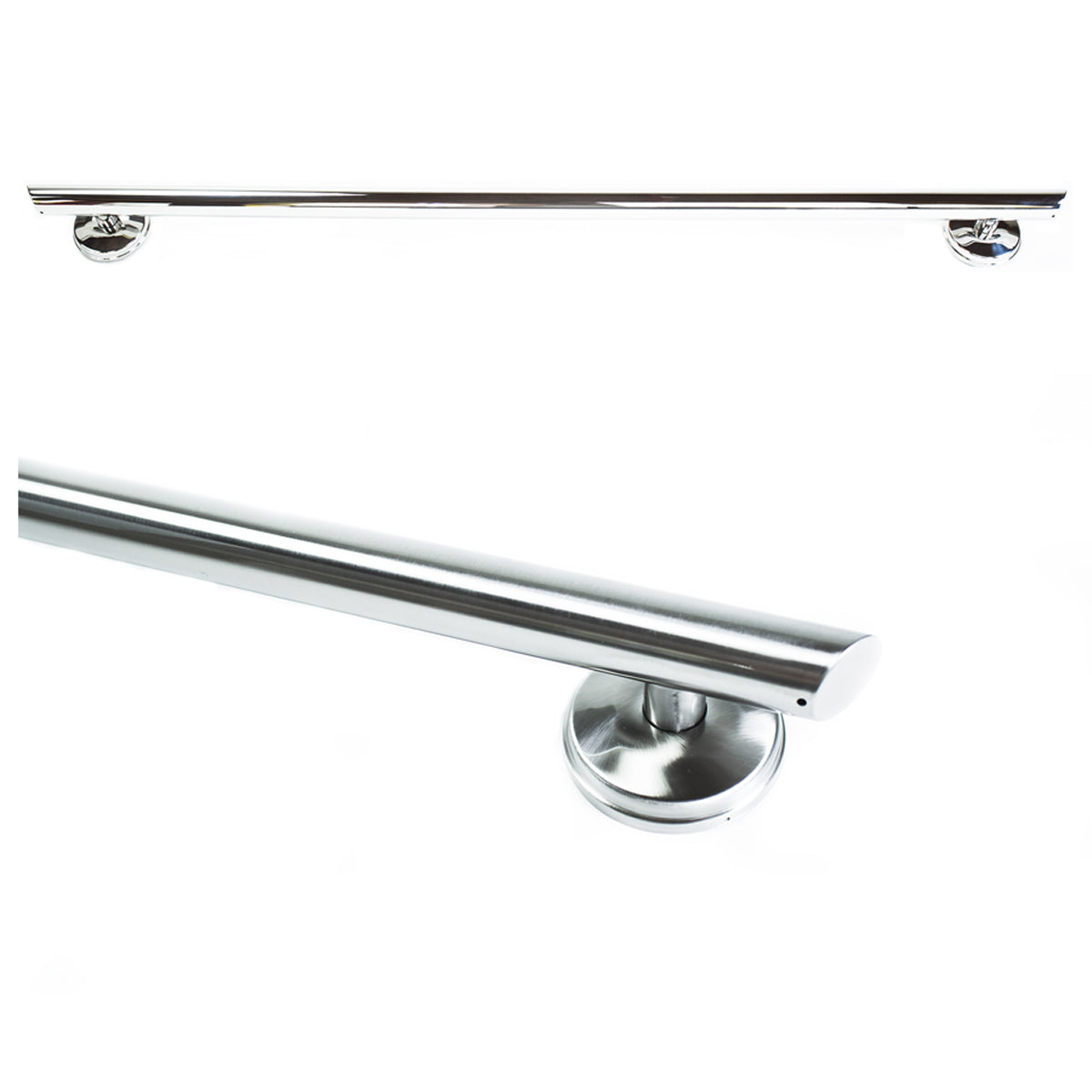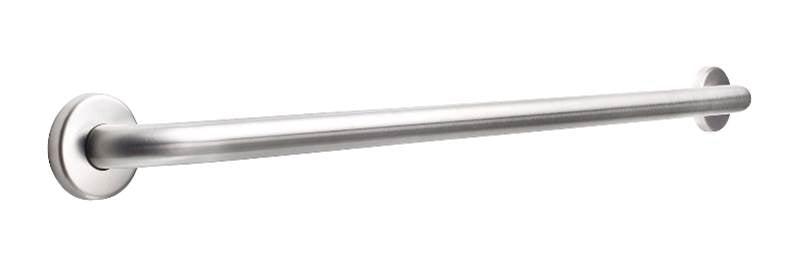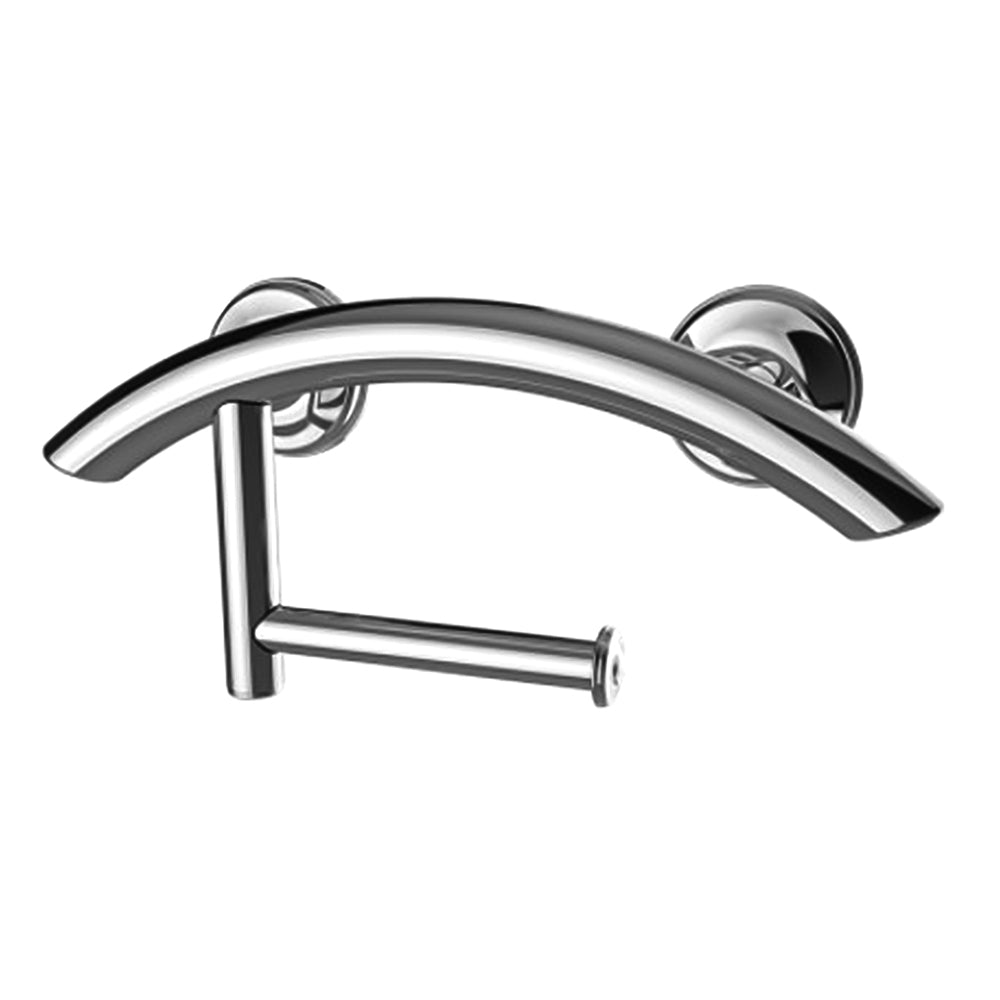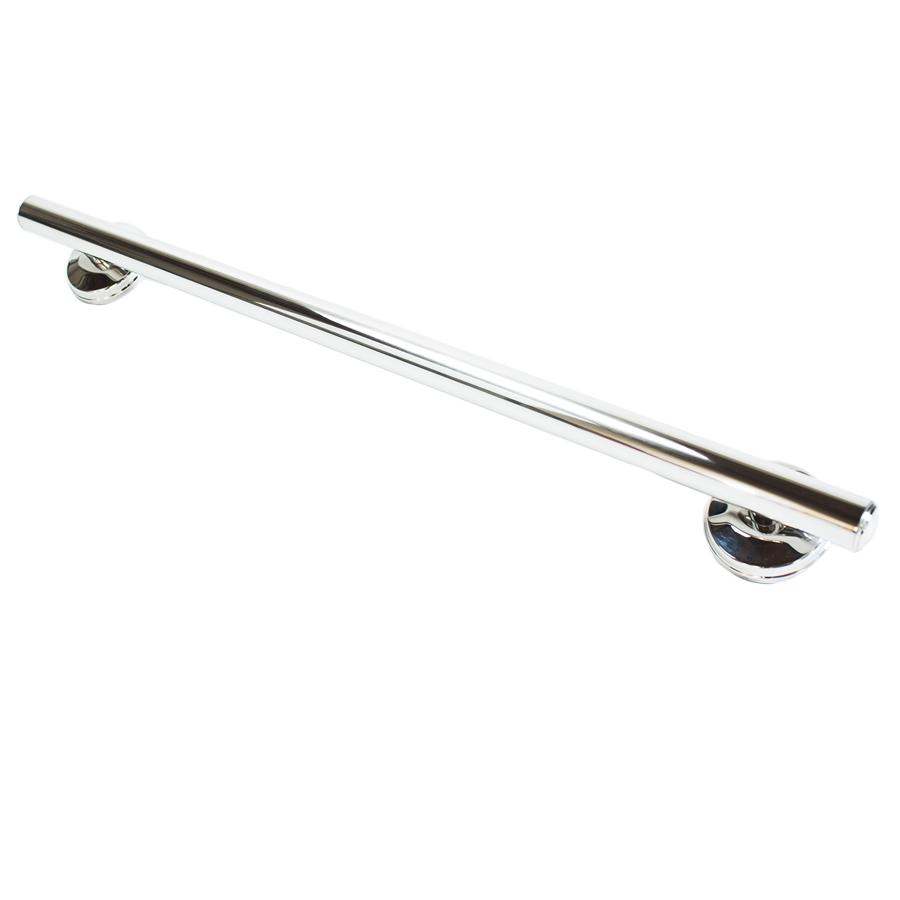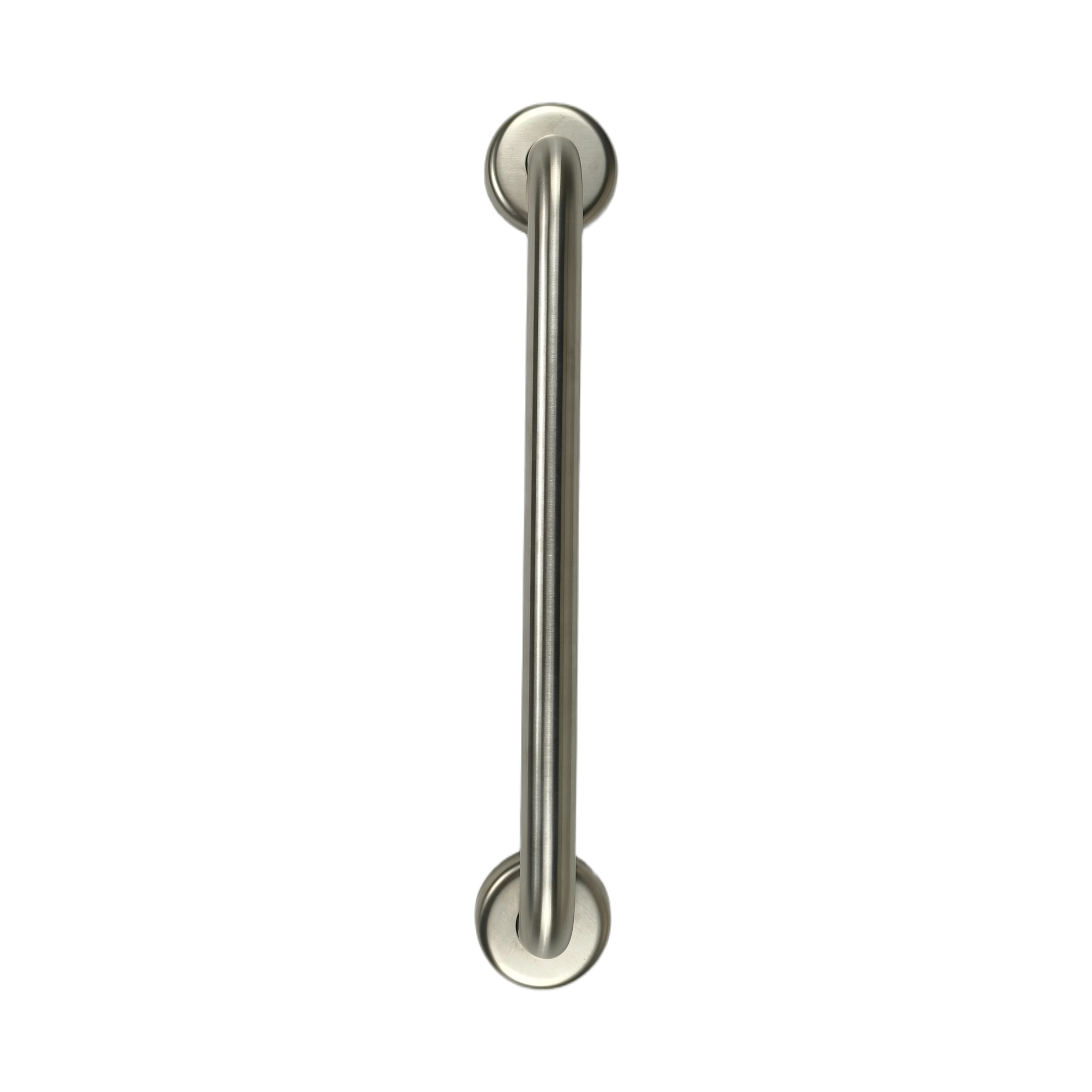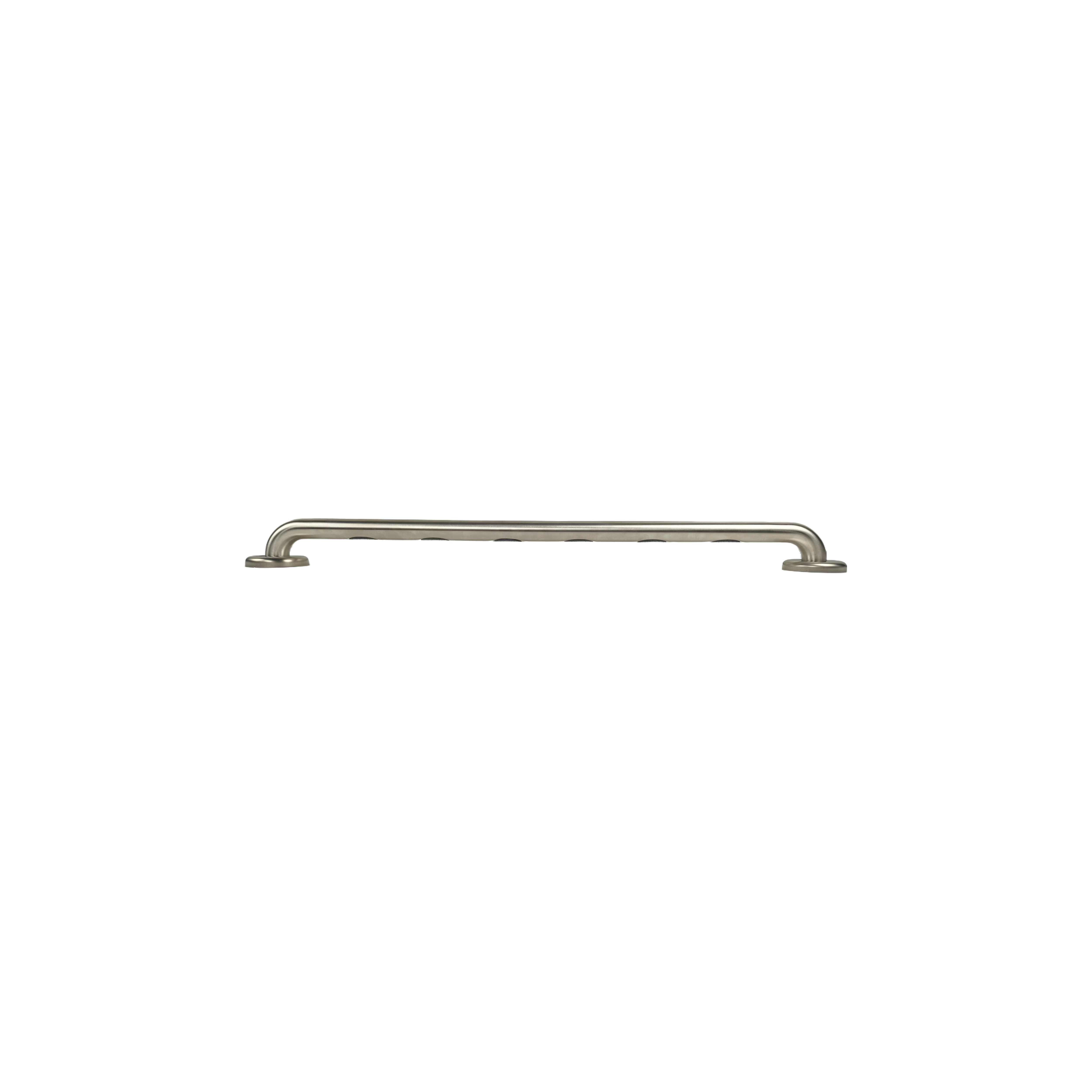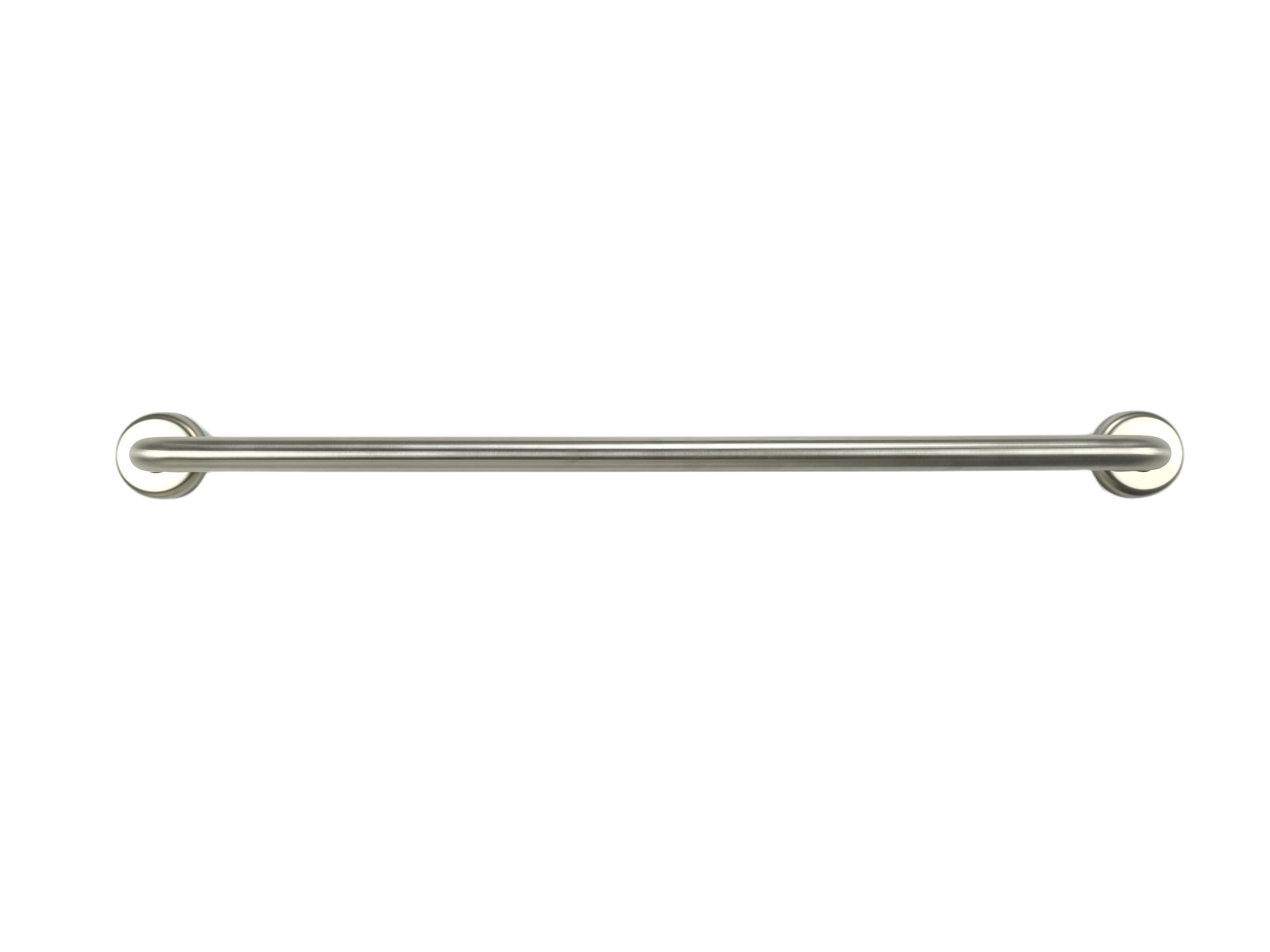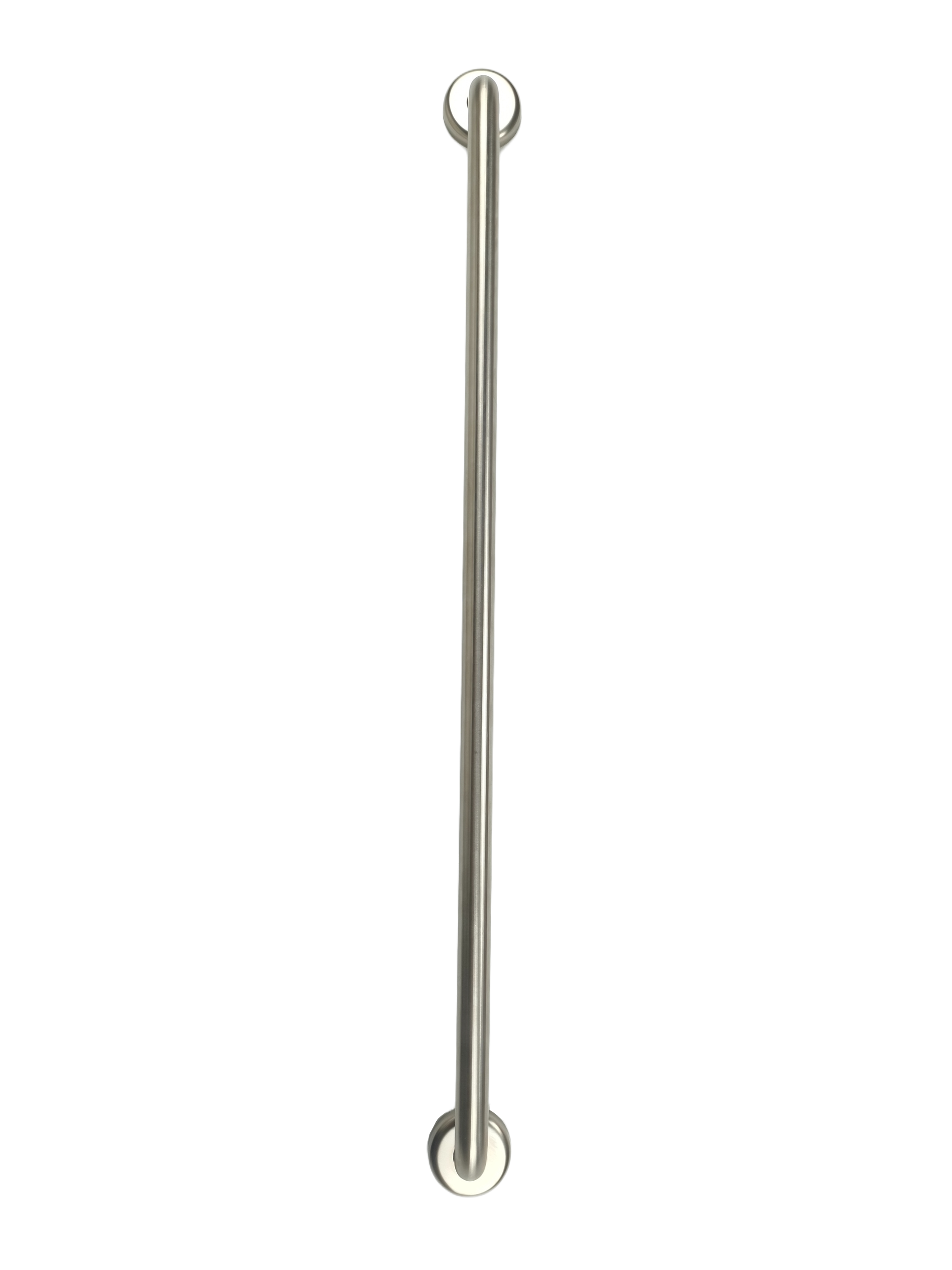ADA Bathroom Grab Bars & Safety Rails
34 products
Showing 1 - 24 of 34 products
Grabcessories by LiveWell ADA Bathroom Grab Bars & Safety Rails
Accessible Design with Unmatched Style
Livewell’s ADA bathroom grab bar inventory is the best you’ll find online. Whether you need Handicap bathroom grab bars or you’re looking for a safety bar for a shower, we have them here.
Plus, you’ll get to experience our world class service that keeps customers coming back for more, and pricing low enough to stretch your budget further than you imagined.
Here is some background information you may need to help you buy grab bars for any bathroom you are responsible for.
What Is An ADA Bathroom Grab Bar?
A bathroom grab bar is exactly what it sounds like - a piece of metal that attaches to the wall of a restroom, allowing patrons or residents to safely sit or stand.
But, an ADA bathroom grab bar in particular is held to stricter standards in terms of requirements and placement. The acronym “ADA” stands for the Americans with Disabilities Act. This law was signed back in the 90’s, and is meant to provide safe, accessible spaces for those with hearing, vision, mobility, or other physical issues that may hinder them.
Why The Grab Bars In Your Bathroom May Need To Be ADA Compliant
If you’re wondering whether or not your bathroom grab bars need to be ADA compliant, chances are you are better off adhering to these stricter standards. You will not only keep your patrons or residents happy, you will be covering your assets.
But, bathrooms meant to be used by individuals only and not the general public don’t necessarily need grab bars. This applies to most apartments. However, the walls in these bathrooms still need to be capable of supporting a bathroom grab bar should one need to be installed in the future.
Whether you are getting ready to open a new restaurant or you are revamping hotel bathrooms, you should invest in ADA compliant restrooms. Here are some other things you may want to know when it comes to compliance.
Other Factors Affecting ADA Compliance In The Restroom
On top of using an ADA bathroom grab bar, your restrooms will be tested to other standards as well.
Things to keep in mind are that the sink must be easily accessible, and the door cannot swing into it. This protects people who may be washing their hands from being hit with the door.
If your restrooms have stalls, one stall needs to be allotted enough space for a wheelchair to turn within it. You also need to ensure there is enough clearance for the door to swing open without hitting the wheelchair.
A final thing to consider is the height of your toilets, toilet paper, etc. These need to be easily reached and within ADA compliant standards, which are ever changing, so stay up to date even after outfitting your restrooms.
What Are The Different Types Of Grab Bars For Bathroom?
You may just be thinking of grab bars for the bathroom, but there are other styles certain facilities will need to invest in as well.
Some of our grab bars even have dual use features, such as acting as a towel rack & shelf, or grab bar & toilet paper holder. Here is a full list of the different types of grab bars we carry for restrooms:
- Towel Grab Bars
- Shower & Bathtub Grab Bars
- Toilet Grab Bars
- Commercial Grab Bars
- Decorative Grab Bars
What Populations Use Bathroom Safety Grab Bars?
Whether they are ADA compliant or not, every public or private bathroom needs a safety grab bar. This is because certain populations - such as elderly or handicapped people - use them on a daily basis.
We carry a wide range of bathroom grab bars for elderly people, as muscle atrophy and degenerative bone & joint issues are so prominent.
We also carry handicap bathroom grab bars, which are geared towards helping those in wheelchairs navigate in and out of the chair with ease.
ADA Bathroom Grab Bars Requirements
If you are wondering what the specific ADA bathroom grab bars requirements are, don’t worry - we’ll cover them in depth now.
A huge part of staying compliant is actually hanging your bathroom safety grab bars at the right height - which we’ll explain in a minute. But the grab bar itself matters, too. ADA requires these to be horizontal, first of all.
The bar must also be circular with a diameter of 1.25”-2”. Non-circular bars are permissible, but they should have a cross-section of 2” and radius of 4”-4.8”.
The depth of the bar must be enough that any hand can fit all the way around it - so ensure it leaves a space of at least 1.5” deep. Plus, any objects below or at either end of the bar need to be spaced at least 1.5” away. On the top of the bar, leave 12” of space minimum.
Ensure your bars are installed securely, as they cannot be allowed to rotate in their fittings. This compromises support.
Everything in your bathroom should have rounded edges, but especially everything surrounding the bathroom safety grab bars. From a support standpoint, the bar must have a weight capacity of at least 250 lbs.
There are two types of ADA bathroom grab bars we’re going to discuss the height requirements of - toilet & shower. We’ll start with the toilet.
ADA Bathroom Grab Bars Height, Length, & Location For Toilets
For toilets to be considered ADA compliant there must be two grab bars present: one on the side wall and one behind the toilet. From a height standpoint, the grab bars need to be installed 33” & 36” off the floor respectively.
The grab bar on the side wall must be at least 42” in length, while leaving at least 1’ of space on each side before the wall. The rear bar can be slightly shorter at 36” long, while extending 12” from center on the side closest to the side bar, and 24” from center on the other side.
It’s important to note that specific requirements may vary when it comes to children’s ADA bathroom grab bars. Kid’s toilets are smaller, and thus the grab bars need to be shorter as well.
To accommodate a broad range of ages, your grab bars for the bathroom should be hung at a height between 18”-27”. If you can get more specific, here are our recommendations:
- 3-4 year olds: 18”-20” hanging height
- 5-8 year olds: 20”-25” hanging height
- 9-12 year olds: 25”-27” hanging height
ADA Bathroom Grab Bars Height, Length, & Location For Bathtubs & Showers
If you’re buying ADA bathroom grab bars for a gym or elderly care facility where showers and bathtubs are present, there are different requirements you need to adhere to.
If the tub does in fact have a permanent seat, two safety grab bars are required on the back wall of the tub - across from where you’d enter. The first needs to be 8-10” from the rim of the tub. The second bar should be above & parallel to the first, around 33-36” from the floor.
A second set of grab bars should be installed at the front edge of the bathtub, on the same wall as the bathtub controls. These should be at the same height as the back wall.
Showers vary a bit, and come in two styles - roll-in & transfer. Roll in showers are ones that accommodate the user's wheelchair so they don’t have to get up, whereas a transfer shower is built for a user to stand up into.
If you are seeking bathroom safety grab bars for a transfer shower, they’ll need to be installed 33”-36” above the floor and have the same weight requirements as toilets. Like a tub, bars are required on both the control wall and the back wall.
Roll in showers, on the other hand, need their grab bars installed specifically below the seat in the shower. If the shower doesn’t feature a seat, then grab bars are required on all three walls of the shower.
Livewell’s ADA bathroom grab bar inventory is the best you’ll find online. Whether you need Handicap bathroom grab bars or you’re looking for a safety bar for a shower, we have them here.
Plus, you’ll get to experience our world class service that keeps customers coming back for more, and pricing low enough to stretch your budget further than you imagined.
Here is some background information you may need to help you buy grab bars for any bathroom you are responsible for.
What Is An ADA Bathroom Grab Bar?
A bathroom grab bar is exactly what it sounds like - a piece of metal that attaches to the wall of a restroom, allowing patrons or residents to safely sit or stand.
But, an ADA bathroom grab bar in particular is held to stricter standards in terms of requirements and placement. The acronym “ADA” stands for the Americans with Disabilities Act. This law was signed back in the 90’s, and is meant to provide safe, accessible spaces for those with hearing, vision, mobility, or other physical issues that may hinder them.
Why The Grab Bars In Your Bathroom May Need To Be ADA Compliant
If you’re wondering whether or not your bathroom grab bars need to be ADA compliant, chances are you are better off adhering to these stricter standards. You will not only keep your patrons or residents happy, you will be covering your assets.
But, bathrooms meant to be used by individuals only and not the general public don’t necessarily need grab bars. This applies to most apartments. However, the walls in these bathrooms still need to be capable of supporting a bathroom grab bar should one need to be installed in the future.
Whether you are getting ready to open a new restaurant or you are revamping hotel bathrooms, you should invest in ADA compliant restrooms. Here are some other things you may want to know when it comes to compliance.
Other Factors Affecting ADA Compliance In The Restroom
On top of using an ADA bathroom grab bar, your restrooms will be tested to other standards as well.
Things to keep in mind are that the sink must be easily accessible, and the door cannot swing into it. This protects people who may be washing their hands from being hit with the door.
If your restrooms have stalls, one stall needs to be allotted enough space for a wheelchair to turn within it. You also need to ensure there is enough clearance for the door to swing open without hitting the wheelchair.
A final thing to consider is the height of your toilets, toilet paper, etc. These need to be easily reached and within ADA compliant standards, which are ever changing, so stay up to date even after outfitting your restrooms.
What Are The Different Types Of Grab Bars For Bathroom?
You may just be thinking of grab bars for the bathroom, but there are other styles certain facilities will need to invest in as well.
Some of our grab bars even have dual use features, such as acting as a towel rack & shelf, or grab bar & toilet paper holder. Here is a full list of the different types of grab bars we carry for restrooms:
- Towel Grab Bars
- Shower & Bathtub Grab Bars
- Toilet Grab Bars
- Commercial Grab Bars
- Decorative Grab Bars
What Populations Use Bathroom Safety Grab Bars?
Whether they are ADA compliant or not, every public or private bathroom needs a safety grab bar. This is because certain populations - such as elderly or handicapped people - use them on a daily basis.
We carry a wide range of bathroom grab bars for elderly people, as muscle atrophy and degenerative bone & joint issues are so prominent.
We also carry handicap bathroom grab bars, which are geared towards helping those in wheelchairs navigate in and out of the chair with ease.
ADA Bathroom Grab Bars Requirements
If you are wondering what the specific ADA bathroom grab bars requirements are, don’t worry - we’ll cover them in depth now.
A huge part of staying compliant is actually hanging your bathroom safety grab bars at the right height - which we’ll explain in a minute. But the grab bar itself matters, too. ADA requires these to be horizontal, first of all.
The bar must also be circular with a diameter of 1.25”-2”. Non-circular bars are permissible, but they should have a cross-section of 2” and radius of 4”-4.8”.
The depth of the bar must be enough that any hand can fit all the way around it - so ensure it leaves a space of at least 1.5” deep. Plus, any objects below or at either end of the bar need to be spaced at least 1.5” away. On the top of the bar, leave 12” of space minimum.
Ensure your bars are installed securely, as they cannot be allowed to rotate in their fittings. This compromises support.
Everything in your bathroom should have rounded edges, but especially everything surrounding the bathroom safety grab bars. From a support standpoint, the bar must have a weight capacity of at least 250 lbs.
There are two types of ADA bathroom grab bars we’re going to discuss the height requirements of - toilet & shower. We’ll start with the toilet.
ADA Bathroom Grab Bars Height, Length, & Location For Toilets
For toilets to be considered ADA compliant there must be two grab bars present: one on the side wall and one behind the toilet. From a height standpoint, the grab bars need to be installed 33” & 36” off the floor respectively.
The grab bar on the side wall must be at least 42” in length, while leaving at least 1’ of space on each side before the wall. The rear bar can be slightly shorter at 36” long, while extending 12” from center on the side closest to the side bar, and 24” from center on the other side.
It’s important to note that specific requirements may vary when it comes to children’s ADA bathroom grab bars. Kid’s toilets are smaller, and thus the grab bars need to be shorter as well.
To accommodate a broad range of ages, your grab bars for the bathroom should be hung at a height between 18”-27”. If you can get more specific, here are our recommendations:
- 3-4 year olds: 18”-20” hanging height
- 5-8 year olds: 20”-25” hanging height
- 9-12 year olds: 25”-27” hanging height
ADA Bathroom Grab Bars Height, Length, & Location For Bathtubs & Showers
If you’re buying ADA bathroom grab bars for a gym or elderly care facility where showers and bathtubs are present, there are different requirements you need to adhere to.
If the tub does in fact have a permanent seat, two safety grab bars are required on the back wall of the tub - across from where you’d enter. The first needs to be 8-10” from the rim of the tub. The second bar should be above & parallel to the first, around 33-36” from the floor.
A second set of grab bars should be installed at the front edge of the bathtub, on the same wall as the bathtub controls. These should be at the same height as the back wall.
Showers vary a bit, and come in two styles - roll-in & transfer. Roll in showers are ones that accommodate the user's wheelchair so they don’t have to get up, whereas a transfer shower is built for a user to stand up into.
If you are seeking bathroom safety grab bars for a transfer shower, they’ll need to be installed 33”-36” above the floor and have the same weight requirements as toilets. Like a tub, bars are required on both the control wall and the back wall.
Roll in showers, on the other hand, need their grab bars installed specifically below the seat in the shower. If the shower doesn’t feature a seat, then grab bars are required on all three walls of the shower.
